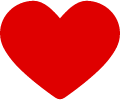
个人信息Personal Information
学历:博士研究生毕业
学位:工学博士学位
性别:男
学科:力学. 航空宇航科学与技术. 材料科学与工程. 机械工程. 冶金工程. 先进制造. 航空工程. 材料工程. 冶金工程. 机械工程. 固体力学
多尺度力学,宏微观力学,梯度结构材料,界面力学,固体本构关系,应变梯度理论,晶体塑性有限元,离散位错动力学,分子动力学,高熵合金,大数据与机器学习,材料基因,极端力学,高性能材料,材料的增强与增韧
2022-10-29 合作论文“Incremental strain gradient plasticity model and torsion simulation of copper micro-wires”在International Journal of Mechanical Sciences发表
发布时间:2022-10-29
Highlights
•An incremental strain gradient plasticity constitutive model is constructed.
•The coupling effect of sample and grain sizes on the plastic hardening is considered.
•A new iterative algorithm that can independently solve the gradient field and plastic strain increment is proposed.
•The size-dependent torsional deformation of copper micro-wires is simulated reasonably.
Abstract
Experimental observations show that the torsional deformation of copper micro-wires exhibits obvious sample and grain size effects. In this work, based on the framework of the cyclic plastic J2 flow rule, an incremental higher-order strain gradient constitutive model is established to describe the size effect observed in the torsional deformation of copper micro-wires. A novel kinematic hardening evolution rule is constructed in which the coupling effect of sample and grain sizes on the plastic hardening has been considered. In terms of numerical implementation, a finite element iterative algorithm which can independently solve the gradient field and plastic strain increment is proposed. Finally, the proposed model is implemented into the finite element software ABAQUS using a three-dimensional user-defined element and user-defined material subroutine. Simulated results show that the proposed model can capture the size-dependent torsional deformation of copper micro-wires since both the effects of sample and grain sizes are considered reasonably. This provides a good basis for the combination of strain gradient plasticity theory and cyclic plasticity constitutive model.
Link
https://doi.org/10.1016/j.ijmecsci.2022.107891

